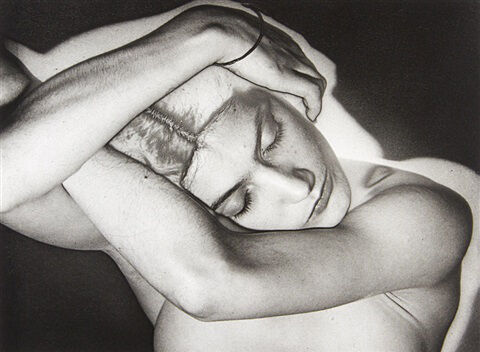
Solarization, 1930
Man Ray
1890 - 1976
Silver Gelatin Print. 20.5 x 25.4 cm.
© Man Ray / BONO
Om fotografen
Man Ray was a photographer, painter and filmmaker who was the only American to play a major role in both the Dada and Surrealist movements. The son of Jewish immigrants—his father was a tailor and his mother a seamstress— he grew up in New York City, where he studied architecture, engineering, and art, and became a painter. As a young man, he was a regular visitor to Alfred Stieglitz’s “291” gallery, where he was exposed to current art trends and earned an early appreciation for photography. In 1915 Man Ray met the French artist Marcel Duchamp, and together they collaborated on many inventions and formed the New York group of Dada artists. Like Duchamp, Man Ray began to produce ready-mades out of commercially manufactured objects that he designated as works of art.
In 1921 Man Ray moved to Paris and became associated with the Parisian Dada and Surrealist circles of artists and writers. Inspired by the liberation promoted by these groups, he experimented with many media. His experiments with photography included rediscovering how to make “cameraless” pictures, or photograms, which he called rayographs. He made them by placing objects directly on light-sensitive paper, which he exposed to light and developed. In 1929, with his lover, photographer and model Lee Miller, Man Ray also experimented with the technique called solarization, which renders part of a photographic image negative and part positive by exposing a print or negative to a flash of light during development. He and Miller were among the first artists to use the process, known since the 1840s, for aesthetic purposes.
Man Ray also pursued fashion and portrait photography and made a virtually complete photographic record of the celebrities of Parisian cultural life during the 1920s and ’30s. Many of his photographs were published in magazines such as Harper’s Bazaar, Vu, and Vogue. He continued his experiments with photography through the genre of portraiture and he also continued to produce ready-mades. Man Ray also made films.
In 1940 Man Ray escaped the German occupation of Paris by moving to Los Angeles. Returning to Paris in 1946, he continued to paint and experiment until his death. His autobiography, Self-Portrait, was published in 1963 (reprinted 1999).
Man Ray